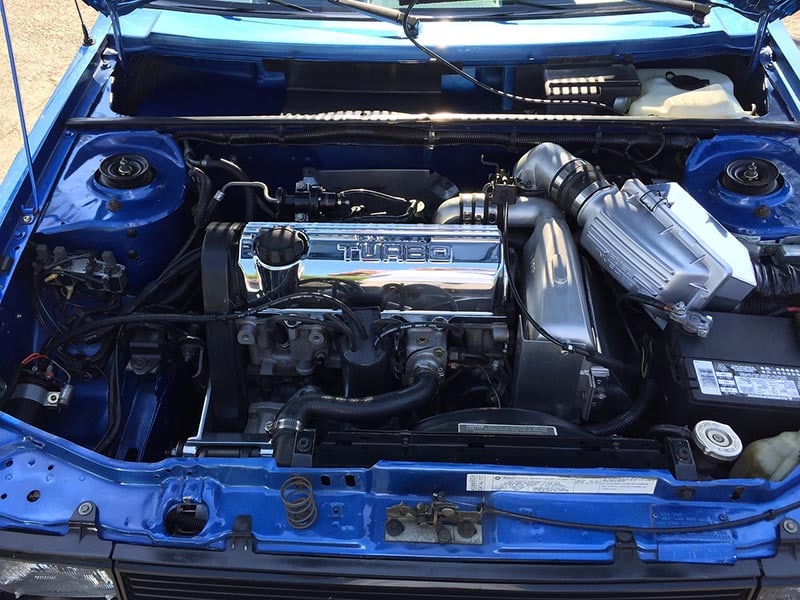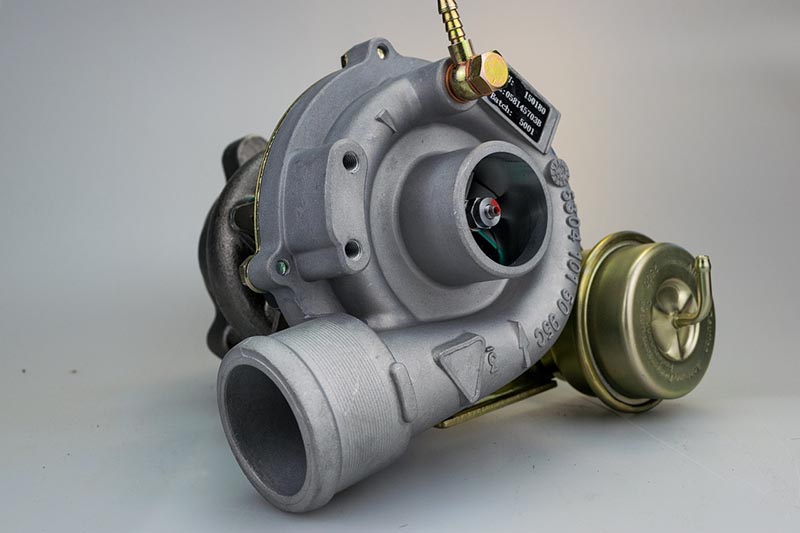What Is a Turbo Engine? Pros, Cons, & FAQ
-
Pete Ortiz
- Last updated:

Turbocharging engines were invented and introduced to the automobile industry in 1965. Invented by popular Swiss engineer Alfred Buchi, these engines were actually first used in aircraft to improve engine performance. However, they gained popularity in the 70s as a direct result of the oil crisis.
Turbocharging has been a major component in reducing exhaust emissions over the past decades and is now standard on not common everyday sedans and SUVS, but on larger diesel engines.
So, What Exactly Is a Turbo Engine?
Turbos use turbine engine power (aka ” combustion-based”) and forced induction to pump more compressed air into the combustion chamber. You can also push more fuel in. This combusts faster than a normally aspirated engine. This makes it more powerful and fuel-efficient. A turbo can pump up to half the air and it can also be smaller and still deliver the same amount of power.
Not too long ago, turbochargers were actually referred to as called “turbo superchargers”. Turbo engines make use of a turbine to push the additional air into the combustion chamber. The supercharger is usually mechanically driven and powered by a belt attached to the crankshaft.

Advantages of Turbo Engines
Turbo-charged engines are expensive and may require additional wiring and tubing. However, they do offer many benefits.
1. The Power Advantage
A turbo engine has the obvious advantage of delivering more power through its intake of air. This means that your car will be significantly faster and more powerful. A turbo engine is lighter and smaller than an engine without a turbocharger.
A small turbo engine could still be used to produce higher performance than an engine with a larger engine. However, it takes up more space and is also more costly to operate. A common great compromise is turbo-charging a small engine.
2. Low Emissions
Turbo-charged engines produce lower emissions, which makes them more environmentally friendly. Because turbo engines provide more air mass to the engine, they make combustion easier and reduce emissions.
3. They’re Great at High Altitudes
Turbo engines work well at any altitude regardless of their elevation above sea level. Atmospheric engines lose their power because the oxygen in the air entering the engine is less and it is impossible to force it inside the engine. Turbo detects that there is less oxygen in the air and the control unit tells the turbo to blow more pressure. The engine simply compensates for any loss in power.

4. They’re Less Noisy
Because a turbo-charged motor is smaller than a naturally aspirated one, the engine’s outer surface emits less sound and therefore produces less noise. The turbocharger almost acts like an extra silencer. They are connected directly to the exhaust stream and restrict the flow of gasses, reducing the engine’s noise.
5. They’re Exciting to Drive
A turbocharged engine can be a joy to drive. Turbo-charging your engine will increase your vehicle’s performance and power output. If you have the money, a turbocharged engine is a good option if your goal is to get a smoother, more powerful ride. You could get all this and save fuel, while also helping the environment.
6. They’re Versatile
Turbochargers can be used with either gasoline or diesel engines. Particularly, diesel turbochargers offer their own set of benefits. They can be used on any vehicle, whether it’s a car, truck, ship, or bus. Any turbocharger will give you more power for the same engine size. This means that every stroke of the piston in any cylinder will produce more power than it would otherwise.
7. They Don’t Require More Space
A turbocharger makes an engine theoretically lighter and smaller than one that produces the same amount of power. A turbo-charged car can often provide better fuel economy. Manufacturers often use smaller engines to make the same car.
A turbo-charged V6 engine may be used instead of a larger V8 or a turbo-charged four-cylinder engine instead. This is where turbochargers have another advantage.

Disadvantages of Turbo Engines
1. Fuel Economy Isn’t Ideal
Yes, it’s great to have more power for the same engine. But what about fuel usage? The fact is that turbochargers don’t always have the best fuel economy, something that comes at the expense of their impressive level of power. Many turbochargers have a significantly lower fuel economy than their competitors, but some don’t. Hybrids and other advanced technologies are the best way to save fuel.
2. They May Not Be as Dependable
Reliability is another problem. A turbocharger adds another layer of complexity to an engine. There are more possibilities for problems, so maintenance is more frequent. This can make the turbo-charged engines more expensive. These engines offer more power from the same design. You can get more from the same engine, but you also experience higher temperatures and pressures, which causes parts to fail much faster.
3. Increased Costs
To make turbo engines more reliable, it costs more. Because the pressure inside of naturally aspirated engines is lower, they can do with less. The engine’s PSI (pound-force per square inch) is twice as much air in each cylinder. Therefore, the pressure and temperature are both higher. Diesel turbo engines are expensive because the PSI increases from turbo-charged to naturally aspirated. To withstand the pressure needed to produce power, they must be stronger.
4. Hotter Engines
Turbo engines run hotter than non-turbo engines. They expose the oil to higher temperatures inside the cylinders and make the engine hotter during operation. Because of the high demands placed on oil, turbo engines can be a bit more challenging to maintain and often require more oil-related maintenance.
Conclusion
So, should you choose a car with a turbo-charged engine? Well, it depends on how much importance you place on engine performance and power. Automobile manufacturers are under increasing pressure to reduce emissions and increase fuel consumption. Turbocharging was once used to speed up cars and burn more fuel. But it’s now used to increase the power of small engines at low engine speeds. They are more efficient, less fuel-intensive, and cleaner than other engines.
- https://www.toyotaofclermont.com/blog/what-is-a-turbocharged-engine/
- https://www.autotrader.com/car-shopping/definitions-turbocharged-engine
- https://www.progressive.com/answers/turbocharged-engines/
- https://www.carwow.co.uk/guides/glossary/how-turbos-work-superchargers-explained#gref
- https://gomechanic.in/blog/turbo-vs-naturally-aspirated-engine/
- https://auto.howstuffworks.com/turbo.htm
Featured Image Credit: Dgrinch3, Pixabay
Contents



